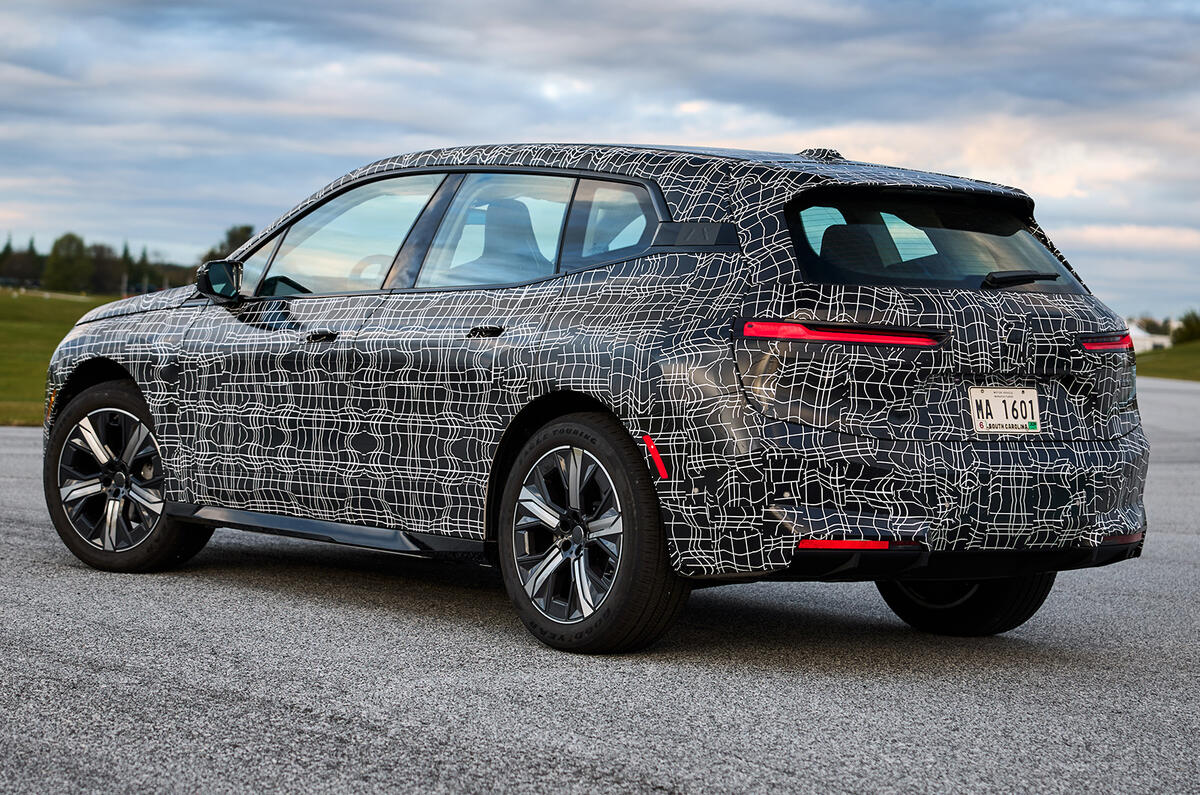As the star player of its electric car range, the BMW iX pretty much smashed it out of the park at the first attempt. Well-appointed and packed with technology, showcasing both fantastic refinement and effortless performance, when it launched back in 2022 the large SUV nailed its luxury EV brief with aplomb. If, that is, you could get past the styling.
The iX will shortly receive a mid-life facelift, which will be unveiled early next year and on sale in the summer – but we've had a first taste of with a drive in a late prototype test car.
Let's get the styling out of the way first: if you didn’t warm to the iX’s ‘distinctive’ grille, temper expectations of this facelift: even with our test car sporting camo wrap, you wouldn’t need an ultrasound to diagnose that it retains a swollen kidney. Remember, that sizeable panel is there for a reason: it houses many of the sensors that the iX’s semi-autonomous assistance features require - that's part of how this car serves as a technical flagship.

While there have been some styling changes that we can't talk about for a while, that wasn't a priority here. As has been the trend with recent updates of electric cars such as the Audi e-tron GT and Porsche Taycan, instead of messing with the styling, BMW has focused on improving the iX’s performance, range and comfort, by upgrading the powertrain technology and electronic that is uses.
When the iX launched it was taking on the likes of what is now the Audi Q8 e-tron and the Mercedes-Benz EQC, but consider the recent or impending arrivals that this car will take on, such as the Volvo EX90, Polestar 3 and impending Range Rover Electric and the need for continual technical improvement is clear. Plus, with a raft of new BMW EVs arriving from next year onwards, the goal is to keep this as a tech-focused halo car.































Join the debate
Add your comment
Maybe confrontational looks is the in look?, anyway, how do you make an EV more appealing to the Eye?, they're nearly all bluff fronted no grill, behind the "grill" is all kinds of wizardry that's supposed to help, safe our lives, aero doesn't have to be sleek apparently these days that's why cars are getting taller, also m humans are getting bigger, hence we need more room in the car,and ultimately, as long as you enjoy driving whatever, that's what matters.
Yeah, thanks for the platitudes.